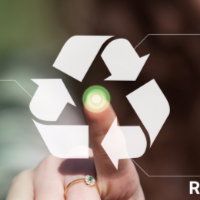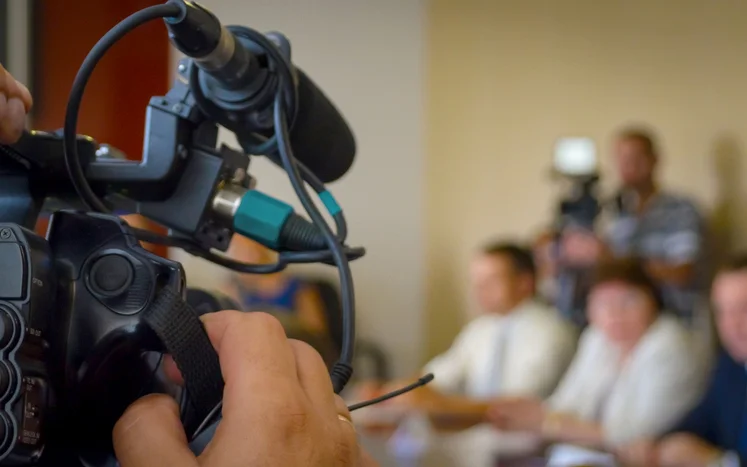Legal Videography: Why It’s a Necessary for Complex Legal Cases
Legal Videography: Why It’s a Necessary for Complex Legal Cases
Blog Article
Why Legal Videography Is Important for Accurate Court Recordings
The duty of lawful videography in courtroom settings can not be overstated, as it works as an essential tool for protecting the honesty of court documents. By recording both spoken and non-verbal interaction, it boosts the clearness of witness testaments and reflects the subtleties of court interactions. This comprehensive documents not only aids in reducing prospective misconceptions yet likewise sustains appellate reviews, therefore enhancing the judicial procedure. The ramifications of incorporating lawful videography into basic court room practices raise essential questions about its broader influence on the lawful system. What might these ramifications entail?
Relevance of Visual Proof
In the world of lawful procedures, the significance of aesthetic proof can not be overstated. Aesthetic proof functions as a powerful tool in developing realities, affirming statements, and boosting the general clarity of an instance. This sort of proof, that includes photographs, videos, and diagrams, can offer a substantial context that spoken descriptions often lack, consequently providing courts and courts a more clear understanding of the situations surrounding an instance.
In addition, aesthetic proof help in the retention of details. Human cognition is inherently visual, and individuals are much more most likely to keep in mind and understand details presented in an aesthetic style. In the court, this can be essential, as engaging aesthetic proof can sway opinions and strengthen the narrative offered by legal agents.
In addition, making use of aesthetic evidence can lessen misconceptions and ambiguities that frequently occur from verbal exchanges. By giving a straight depiction of occasions, visual proof aids to remove subjective interpretations and fosters a more unbiased examination of the truths. The integration of aesthetic proof right into lawful proceedings not just strengthens the integrity of the judicial procedure but additionally boosts the probability of attaining a simply result.
Recording Non-Verbal Hints
Making use of advanced videography strategies can substantially boost the capture of non-verbal cues during legal process. Non-verbal interaction, consisting of faces, body movement, and eye contact, plays a critical role in conveying feelings and intents that might not be explicitly specified in spoken testament. legal videography. Lawful videography uses high-def video cameras and tactical angles to make sure that these refined signs are recorded with quality and accuracy
The capability to examine non-verbal behavior can offer beneficial context to statements made during court sessions. For circumstances, a witness's reluctance or confidence can be analyzed via their stance or gestures, possibly influencing the court's assumption of trustworthiness. In addition, the use of close-up shots can help concentrate on an audio speaker's expressions, permitting for a more nuanced understanding of the testament.
Moreover, incorporating multiple cam angles can create a comprehensive view of interactions, highlighting dynamics between celebrations entailed. This complex method not just enhances the precision of the court record yet additionally aids in protecting the integrity of the judicial procedure - legal videography. Ultimately, capturing non-verbal hints with lawful videography cultivates a richer, a lot more total representation of court room proceedings

Enhancing Statement Dependability
The integrity of testimony can be considerably bolstered with the usage of high-quality legal videography. Video recordings function as an objective medium that records not only the talked words of witnesses yet likewise the subtleties of their shipment, including tone, pacing, useful content and psychological expressiveness. This multifaceted documentation provides a clearer understanding of the witness's integrity and intentions, which can be crucial in lawful process.
Additionally, lawful videography minimizes the capacity for misconceptions that might emerge from written transcripts alone. find When jurors can observe a witness's temperament and body language along with their testament, they are much better geared up to examine the credibility and integrity of the evidence presented. This visual context can enhance the testimonial narrative, making it more compelling and reputable.
In addition, the visibility of a video clip recording can deter potential inconsistencies in testament. Witnesses might be much more cautious in their declarations when they understand they are being videotaped, bring about more precise and honest accounts. Overall, high-grade legal videography improves the stability of testament, ensuring that the court has access to a full and honest depiction of the facts as communicated by the witnesses.
Sustaining Appeals and Reviews
Lawful videography plays an essential role in supporting allures and evaluations by offering a thorough aesthetic document of court process. This aesthetic documents captures not just the talked words of witnesses and attorneys yet also the subtleties of body movement, tone of voice, and court characteristics. Such components can be pivotal in comprehending Get More Info the context of testimonies and debates offered.
In the appellate procedure, where the focus is on errors of legislation and step-by-step fairness, a video clip document can work as an important tool for appellate courts. It enables courts to assess the original trial context, making certain that choices are based upon a full understanding of the process. The capability to visually examine the demeanor of witnesses or the interactions between celebrations can reveal insights that created records might neglect.

Furthermore, lawful videography can help in clarifying uncertainties in statements or procedural judgments, consequently strengthening the basis for an allure. By supplying a trustworthy, unbiased account of what taken place in court, legal videography not just supports the stability of the legal procedure but likewise encourages all events entailed to make informed choices regarding their instances.
Streamlining Court Processes
Enhancing courtroom efficiency, lawful videography simplifies processes by offering prompt access to visual records of procedures. This technology permits judges, lawyers, and juries to take another look at essential testament and evidence, making sure that all parties have a clear understanding of the case. By catching the nuances of spoken and non-verbal interaction, videography enhances the document, making it easier to comprehend the context and weight of statements.

Additionally, video clip recordings can facilitate remote participation in hearings, enabling for better adaptability in scheduling and participation, which is particularly important in intricate instances entailing multiple stakeholders.
Verdict
Finally, legal videography plays an essential duty in making certain precise court recordings by supplying essential aesthetic evidence that captures both spoken and non-verbal communication. This technique boosts the reliability of statements, supports appellate reviews, and streamlines court processes. By fostering a comprehensive understanding of court room characteristics, legal videography ultimately adds to a lot more equitable judicial outcomes, enhancing the stability of the legal system and promoting notified decision-making.
Report this page